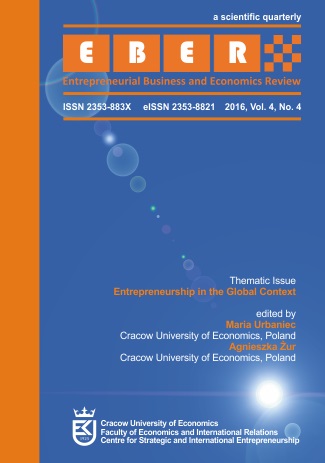Work-life Balance Decision-making of Norwegian Students: Implications for Human Resources Management
Work-life Balance Decision-making of Norwegian Students: Implications for Human Resources Management
Author(s): Remigiusz Gawlik, Gorm JacobsenSubject(s): Economy, Business Economy / Management
Published by: Uniwersytet Ekonomiczny w Krakowie
Keywords: determinants of quality of life; work-life balance, qualitative-quantitative research; human resources; decision-making;
Summary/Abstract: Objective: The paper aims at identifying and assessing the significance of work-life balance determinants between the Youth of highly developed societies and its implications for human resources management on the example of Norway. Research Design & Methods: The research target group consists of 236 respondents recruited among Norwegian tertiary education students. It employed literature analysis, two-stage exploratory research: direct individual in-depth interviews, survey based on a self-administered, web-based questionnaire with single-answer, limited choice qualitative & quantitative, as well as explanatory research (informal moderated group discussions). Findings: The research on perceptions of determinants of quality of life and attractiveness of life strategies shows that in a country with relatively high socio-economic development level, such as Norway, differences in rankings do exist. They can be observed in relevance to both material and non-material QoL determinants. Implications & Recommendations: The study revealed a need for deeper research on individually driven early decision-making of future employees and entrepreneurs. This will result in closer modelling of socio-economic phenomena, including more accurate adaptation to trends on the labour market and creation of new business models. Contribution & Value Added: Research value added comes from the comparison of perceptions of quality of life determinants between countries at various stages of socio-economic development and its implications for human resource management.
Journal: Entrepreneurial Business and Economics Review
- Issue Year: 4/2016
- Issue No: 4
- Page Range: 153-170
- Page Count: 18
- Language: English

